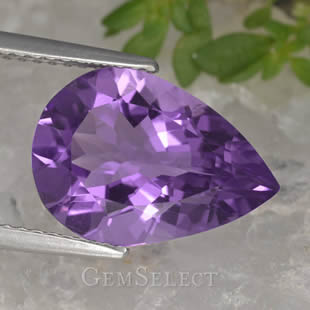Hydrothermal Quartz

Introduction to Quartz
Quartz is everywhere - literally one of the most abundant minerals on Earth. You can find it in everything from sandy beaches to your wristwatch. While natural quartz, especially varieties like violet amethyst or yellow citrine, can fetch a decent price (think a few bucks per carat), it’s generally pretty affordable. But here’s the kicker: despite its low cost, there’s a massive industry churning out synthetic quartz. Why? Let’s dive in. For more details on quartz varieties, check out our comprehensive quartz guide.
Why Synthetic Quartz?
Producing synthetic quartz isn’t exactly cheap - it’s almost as pricey as mining the real stuff. So why bother? The answer lies in precision and demand. Synthetic quartz, made through a process called hydrothermal transport and recrystallization, is a game-changer for industries needing flawless, consistent material. Think tech - oscillators, gauges, microphones, clocks, and watches all rely on quartz’s piezoelectric properties. That’s right, your smartwatch probably has some lab-grown quartz ticking away inside.
The Hydrothermal Process
Picture a giant pressure cooker, about 3 meters tall, called an autoclave. This beast is the heart of the hydrothermal process. Inside, you’ve got a solution of sodium carbonate or hydroxide, with small quartz fragments at the bottom acting as the raw material. Up top, a cage holds tiny quartz seed crystals. Crank the heat to around 400°C, and the quartz fragments dissolve, only to recrystallize onto those seeds in the cooler upper part of the autoclave. It’s like growing crystals in a high-tech garden.

Applications of Synthetic Quartz
Originally, this process was all about making colorless quartz for industrial use - think electronics, not jewelry. But it’s also a gemstone goldmine. Need a massive, flawless amethyst for a statement piece? Or a perfectly matched set of citrines? Hydrothermal quartz can deliver. Plus, it can produce colors you won’t find in nature, like wild multicolored combos that scream “lab-grown” in the best way possible. Learn more about quartz applications in our detailed quartz overview.

Identifying Synthetic Quartz
Synthetic quartz is chemically identical to the natural stuff - both are silicon dioxide crystals. So, how do you spot the fake? Well, it’s not fake, just lab-grown, and reputable dealers will always label it as such. Gemologists can often spot seed crystals in synthetic quartz or check for untwinned crystals (though modern methods can now mimic twinning). For the rest of us, look at size, color, and clarity. Synthetic amethyst or citrine often comes in huge sizes with perfect clarity - think “too good to be true.” Natural stones usually have color zoning, while synthetics might boast vivid or unnatural hues, like blue or green ametrine that doesn’t exist in the wild. For expert tips, explore our guide on detecting synthetic quartz.

Frequently Asked Questions
What is hydrothermal quartz?
Hydrothermal quartz is synthetic quartz grown in a lab using a high-pressure, high-temperature process called hydrothermal transport and recrystallization, producing crystals identical to natural quartz.
How can I tell if quartz is synthetic?
Look for unusually large sizes, perfect clarity, or vivid, unnatural colors. Gemologists can identify synthetic quartz by checking for seed crystals or untwinned structures. For more details, see our guide on identifying synthetic quartz.
Why is synthetic quartz used in technology?
Synthetic quartz is prized for its piezoelectric properties, making it essential for devices like oscillators, gauges, microphones, clocks, and watches.

